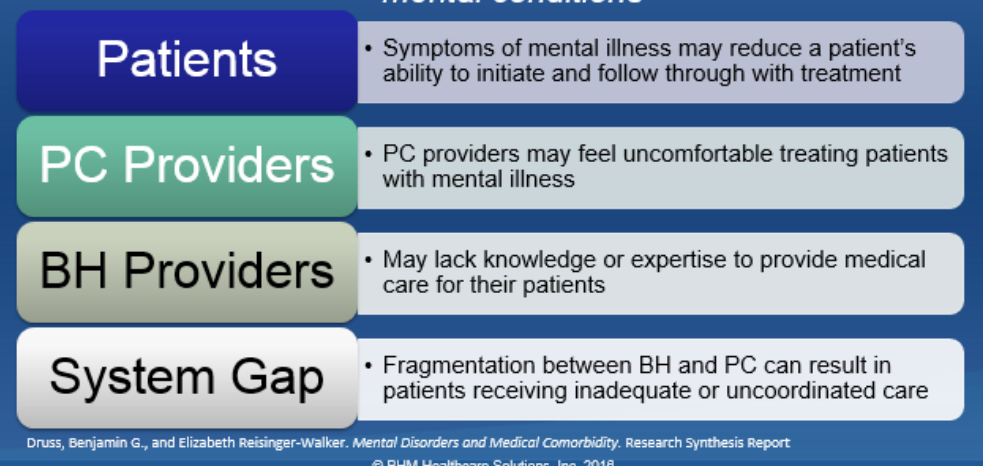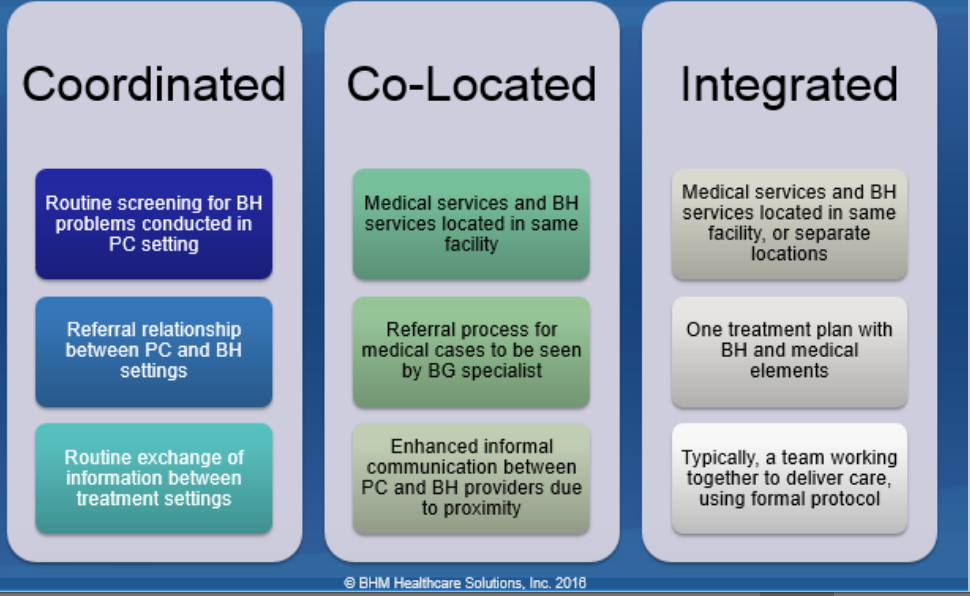| BHM integrates behavioral health through our independent review services. Our network compliments your organization’s push for integration with over 500 practicing clinicians. Click here about how this approach and expertise sets BHM review services apart. |
Behavioral Health Integration has become one of the largest trends in healthcare this year. With one in 5 adults¹ experiencing a mental health condition each year, mental health can longer be pushed to the back burner. The demand for behavioral health services across the nation is sky rocketing, putting BH integration in an important position to help close gaps in care. It will take everyone from provider to payers breaking the stigma surrounding mental health and investing in ways to improve access to care and care outcomes.
Mental Health Facts from the CDC
- 3.6% of adults experienced serious psychological distress within a 30-day period in 2015
- From 1999 through 2014, the age-adjusted suicide rate in the United States increased 24%, from 10.5 to 13.0 per 100,000 population, with the pace of increase greater after 2006.
- Between 2009-2010 there were 63.3 million visits (to physician offices, hospital outpatient and emergency departments) with mental disorders as primary diagnosis
Mental health issues are frequently unrecognized, and even when diagnosed, are not treated adequately. This is why recognition and treatment of mental illness are significant issues for primary care physicians who provide the majority of health care. Coordinating primary care and mental health helps close gaps in care.
The Treatment Gap
Behavioral Health Integration
¹ https://www.nami.org/Learn-More/Mental-Health-Conditions#sthash.wRUCBCtI.dpuf







